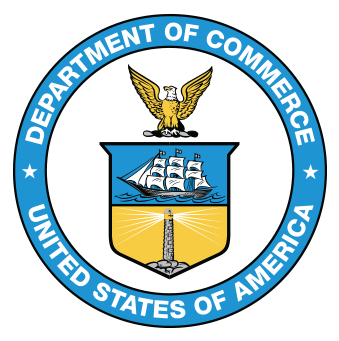Skimmer trawls are utilized throughout the southeastern United States to target penaeid shrimp (Penaeidae). Because the codends of these trawls can be readily retrieved, skimmer trawls are allowed to utilize restricted tow times (55 and 75 minute, seasonally) in lieu of Turtle Excluder Device (TED) requirements as a sea turtle bycatch mitigation measure. However, observations aboard commercial vessels indicate that tow times are often exceeded. In 2008, the Southeast Fisheries Science Center Mississippi Laboratories began investigating the feasibility of TED use in skimmer trawls. Dependent testing was conducted aboard twin-rigged contracted commercial vessels during the 2008 and 2009 fishing seasons in the coastal waters of Alabama and Mississippi. The experimental design consisted of paired comparisons designed to examine shrimp catch retention, bycatch reduction, and TED usability. A TED was installed in one net (treatment), while the other was left naked with no TED installed (control). The TED was switched between port and starboard nets daily to remove potential vessel side bias. Data consists of tow level data for each net (treatment vs control) for five major catch categories; shrimp, finfish, non-shrimp crustaceans, other invertebrates, and debris. Start and end locations, times, and depths were recorded for each tow along with vessel identifier, date, tow speed, and location of the TED (port vs starboard). Data were used to determine TED efficiency with regard to shrimp catch and bycatch reduction. All dependent skimmer trawl TED testing data after 2009 were collected by the Southeast Fisheries Observer Program (SEFOP).
About this Dataset
| Title | Fishery-Dependent Turtle Excluder Device Catch Assessment Data: Skimmer Trawl |
|---|---|
| Description | Skimmer trawls are utilized throughout the southeastern United States to target penaeid shrimp (Penaeidae). Because the codends of these trawls can be readily retrieved, skimmer trawls are allowed to utilize restricted tow times (55 and 75 minute, seasonally) in lieu of Turtle Excluder Device (TED) requirements as a sea turtle bycatch mitigation measure. However, observations aboard commercial vessels indicate that tow times are often exceeded. In 2008, the Southeast Fisheries Science Center Mississippi Laboratories began investigating the feasibility of TED use in skimmer trawls. Dependent testing was conducted aboard twin-rigged contracted commercial vessels during the 2008 and 2009 fishing seasons in the coastal waters of Alabama and Mississippi. The experimental design consisted of paired comparisons designed to examine shrimp catch retention, bycatch reduction, and TED usability. A TED was installed in one net (treatment), while the other was left naked with no TED installed (control). The TED was switched between port and starboard nets daily to remove potential vessel side bias. Data consists of tow level data for each net (treatment vs control) for five major catch categories; shrimp, finfish, non-shrimp crustaceans, other invertebrates, and debris. Start and end locations, times, and depths were recorded for each tow along with vessel identifier, date, tow speed, and location of the TED (port vs starboard). Data were used to determine TED efficiency with regard to shrimp catch and bycatch reduction. All dependent skimmer trawl TED testing data after 2009 were collected by the Southeast Fisheries Observer Program (SEFOP). |
| Modified | 2025-04-04T13:19:40.120Z |
| Publisher Name | N/A |
| Contact | N/A |
| Keywords | Fishery Dependent , GOM , Gulf of Mexico , Mississippi Laboratories , Skimmer Trawl , TED , Turtle Excluder Device , DOC/NOAA/NMFS/SEFSC > Southeast Fisheries Science Center, National Marine Fisheries Service, NOAA, U.S. Department of Commerce , Turtle Excluder Device Data , oceans |
{
"identifier": "gov.noaa.nmfs.inport:29493",
"accessLevel": "public",
"contactPoint": {
"@type": "vcard:Contact",
"fn": "Your contact point",
"hasEmail": "mailto:[email protected]"
},
"programCode": [
"010:000"
],
"landingPage": "",
"title": "Fishery-Dependent Turtle Excluder Device Catch Assessment Data: Skimmer Trawl",
"description": "Skimmer trawls are utilized throughout the southeastern United States to target penaeid shrimp (Penaeidae). Because the codends of these trawls can be readily retrieved, skimmer trawls are allowed to utilize restricted tow times (55 and 75 minute, seasonally) in lieu of Turtle Excluder Device (TED) requirements as a sea turtle bycatch mitigation measure. However, observations aboard commercial vessels indicate that tow times are often exceeded. In 2008, the Southeast Fisheries Science Center Mississippi Laboratories began investigating the feasibility of TED use in skimmer trawls. Dependent testing was conducted aboard twin-rigged contracted commercial vessels during the 2008 and 2009 fishing seasons in the coastal waters of Alabama and Mississippi. The experimental design consisted of paired comparisons designed to examine shrimp catch retention, bycatch reduction, and TED usability. A TED was installed in one net (treatment), while the other was left naked with no TED installed (control). The TED was switched between port and starboard nets daily to remove potential vessel side bias. Data consists of tow level data for each net (treatment vs control) for five major catch categories; shrimp, finfish, non-shrimp crustaceans, other invertebrates, and debris. Start and end locations, times, and depths were recorded for each tow along with vessel identifier, date, tow speed, and location of the TED (port vs starboard). Data were used to determine TED efficiency with regard to shrimp catch and bycatch reduction. All dependent skimmer trawl TED testing data after 2009 were collected by the Southeast Fisheries Observer Program (SEFOP).",
"language": "",
"distribution": [
{
"@type": "dcat:Distribution",
"mediaType": "application\/json",
"accessURL": "https:\/\/www.ncei.noaa.gov\/metadata\/geoportal\/\/rest\/metadata\/item\/gov.noaa.nmfs.inport%3A29493"
},
{
"@type": "dcat:Distribution",
"mediaType": "text\/html",
"accessURL": "https:\/\/www.ncei.noaa.gov\/metadata\/geoportal\/\/rest\/metadata\/item\/gov.noaa.nmfs.inport%3A29493\/html"
},
{
"@type": "dcat:Distribution",
"mediaType": "application\/xml",
"accessURL": "https:\/\/www.ncei.noaa.gov\/metadata\/geoportal\/\/rest\/metadata\/item\/gov.noaa.nmfs.inport%3A29493\/xml"
}
],
"bureauCode": [
"010:04"
],
"modified": "2025-04-04T13:19:40.120Z",
"publisher": {
"@type": "org:Organization",
"name": "Your Publisher"
},
"theme": "",
"keyword": [
"Fishery Dependent",
"GOM",
"Gulf of Mexico",
"Mississippi Laboratories",
"Skimmer Trawl",
"TED",
"Turtle Excluder Device",
"DOC\/NOAA\/NMFS\/SEFSC > Southeast Fisheries Science Center, National Marine Fisheries Service, NOAA, U.S. Department of Commerce",
"Turtle Excluder Device Data",
"oceans"
]
}
